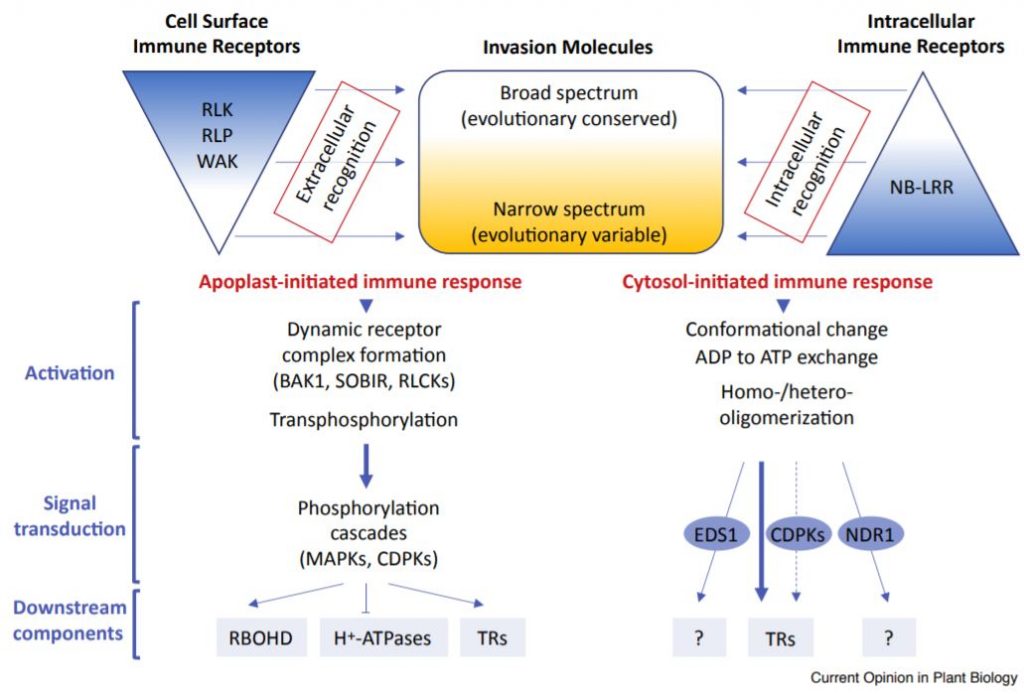
Review: Plant immunity, refining the model (Trends in Plant Sci and Curr Opin Plant Biol)
Plant Science Research WeeklyInteractions between plants and microorganisms occur in many different ways and on many different levels. Scientists have been attracted to this field of research because of the need to identify the agents causing infectious diseases in economically important crops. Models have been developed to describe…

Plant Calcium Channels Perceive the Hungry Caterpillar
Research, The Plant Cell: In a NutshellMeena et al. identify a Ca2+ channel involved in herbivory recognition.
Plant Cell https://doi.org/10.1105/tpc.19.00057
By Mukesh Kumar Meena, Ramgopal Prajapati, Deepthi Krishna and Jyothilakshmi Vadassery are from National Institute of Plant Genome Research (NIPGR), New Delhi, India
Background:…
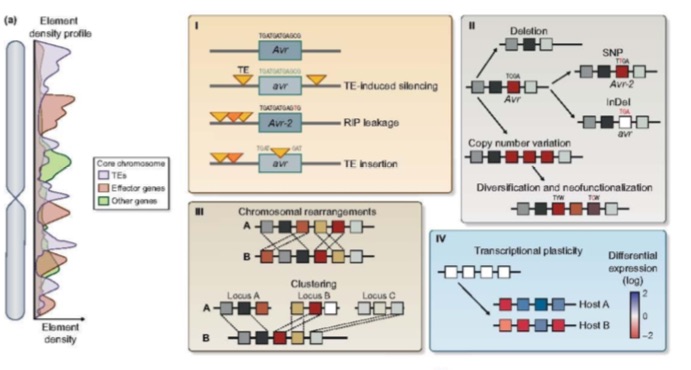
Insight: Rapid evolution in plant – microbe interactions (New Phytol)
Plant Science Research WeeklyPlants and associated microbes co-exist and co-evolve over time. The rate of evolution is higher in pathogens as compared to plants. Although the phenotypic consequences of rapid evolution in pathogens are well studied, changes at genomic level are not as well known, and are the subject of a recent review…
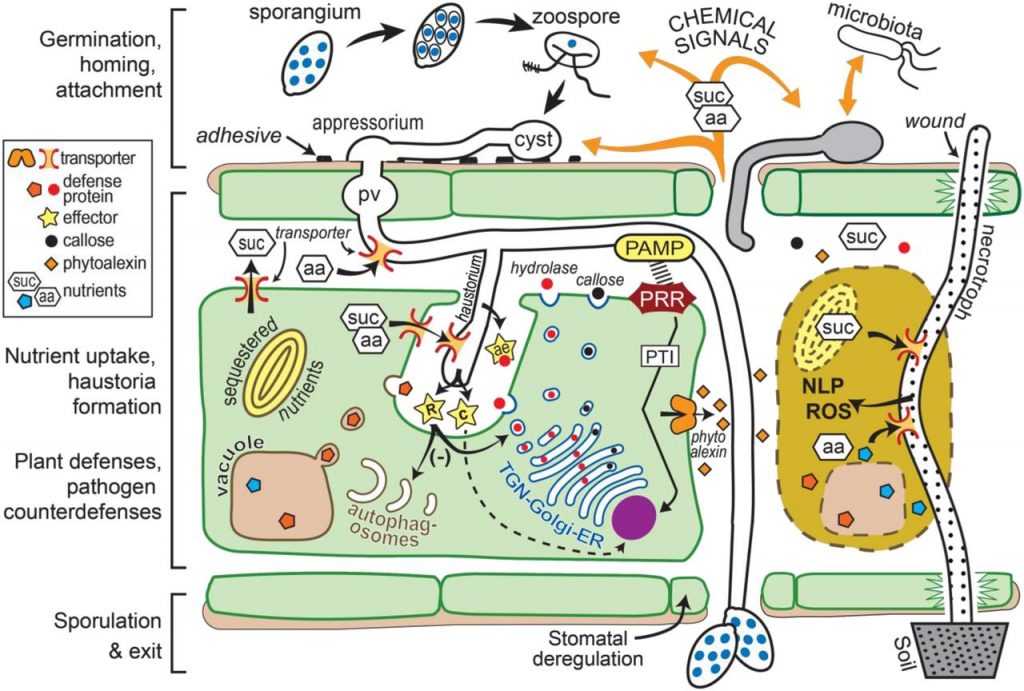
Review: Exchanges at the plant-oomycete interface that influence disease (Plant Physiol)
Plant Science Research WeeklyThis is a great review by Judelson and Ah-Fong on the diverse signals that occur between plants and their oomycete pathogens. The authors start by describing the life- and infectivity-cycles of disease-causing oomycetes, including the familiar plant pathogens, "aggressive" Pythium and "stealthy" Phytophthora.…
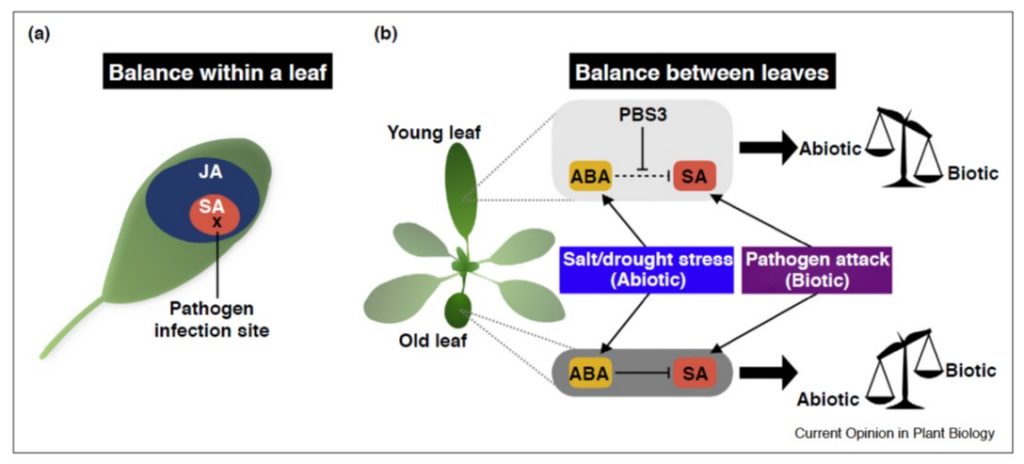
Review: The plant immune system in heterogeneous environments (Curr Opin Plant Bio)
Plant Science Research WeeklyNobori and Tsuda review how the plant immune system is able to function in heterogeneous environments through its properties of resilience, tunability and balance. They define a resilient system as one where “output remains stable even when part of the system is disabled.” Abiotic factors such as…
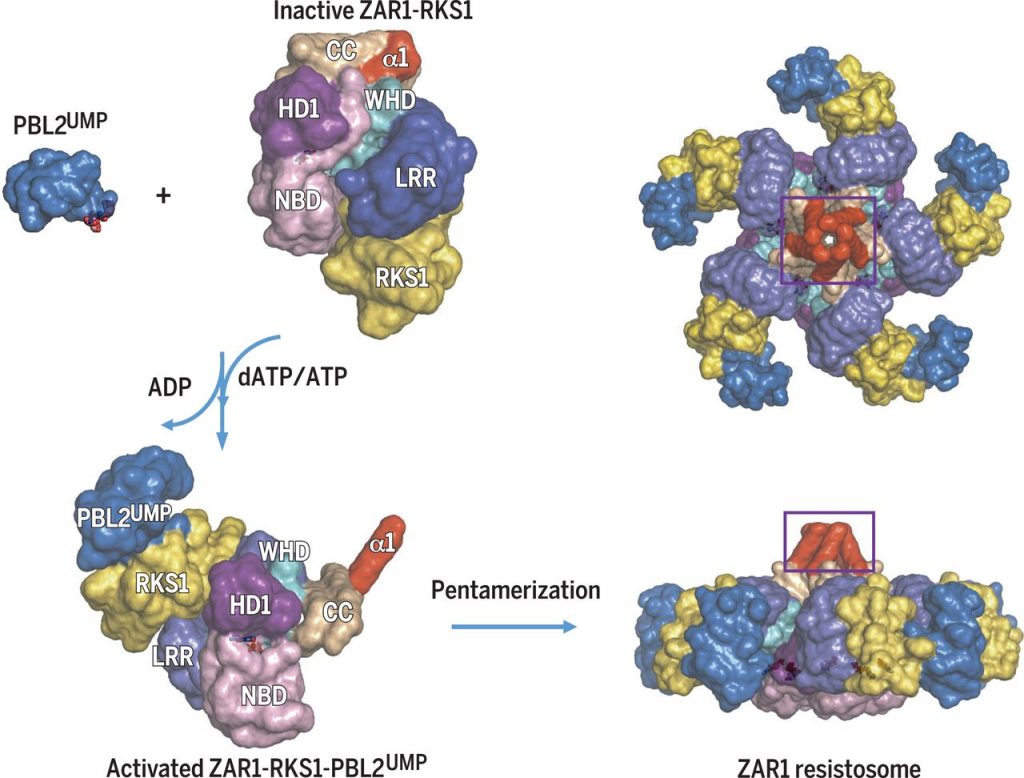
Structure and activation of a plant NLR resistosome ($) (Science)
Plant Science Research WeeklyThe 2017 Chemistry Nobel Prize went to the developers of cryo-electron microscopy, and this method is transforming plant science as well as other life sciences. In a pair of back-to-back papers, Wang et al. used cryo-EM to examine how ZAR1, a CC-NLR protein [Coiled-coil (CC) nucleotide-binding (NB),…

Detection and stealth at the wall: glycosidases and glycans in flagellin peptide recognition ($) (Science)
Plant Science Research WeeklyBacterial flagellin is a well-known microbial pattern that triggers plant immune responses. Flagellin is a glycosylated protein polymer. The immunogenic domain is buried within the protein structure as well as beneath a glycan layer. Buscaill et al. set out to identify how this immunogenic elicitor is…
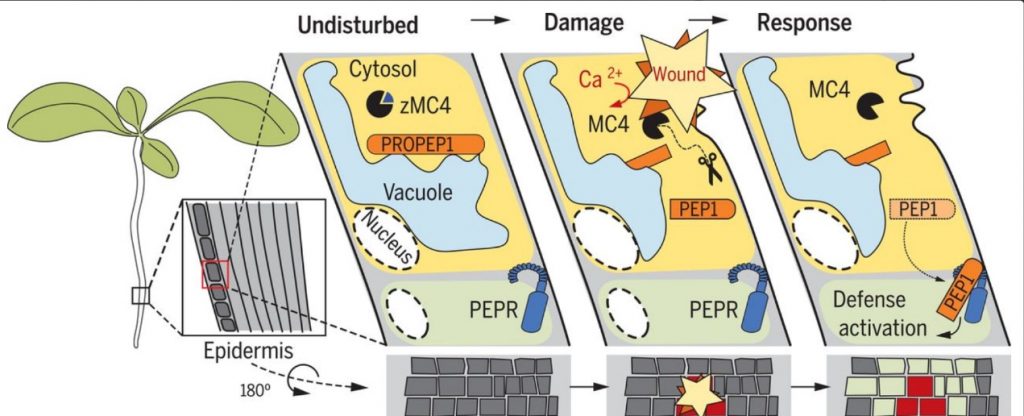
Ca2+-dependent processing of immunomodulatory peptides ($) (Science)
Plant Science Research WeeklyPlants are sessile organisms that have evolved an extraordinary immune system to optimally adapt to the risky environment, which includes hazards such as insect chewing, weather damaging, and pathogen invasion. But the signaling mechanism of how the physical damage of cells triggers the intracellular…
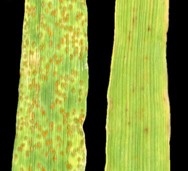
Plant Physiology Focus issue on biotic stress
Plant Science Research WeeklyThe April 2019 issue of Plant Physiology includes a set of papers addressing biotic interactions between plant and pathogens or pests. As the editors indicate, progress on this topic has been rapid and significant. Key topics explored in reviews and research articles include: the roles of plant hormones,…

